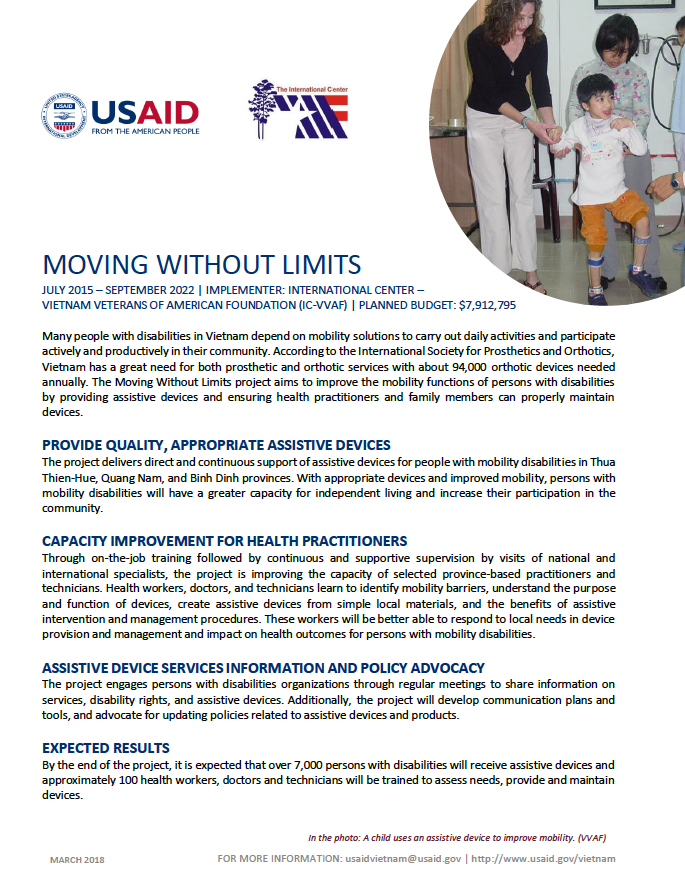Speeches Shim
Many people with disabilities in Vietnam depend on mobility solutions to carry out daily activities and participate actively and productively in their community. According to the International Society for Prosthetics and Orthotics, Vietnam has a great need for both prosthetic and orthotic services with about 94,000 orthotic devices needed annually. The Moving Without Limits project aims to improve the mobility functions of persons with disabilities by providing assistive devices and ensuring health practitioners and family members can properly maintain devices.
PROVIDE QUALITY, APPROPRIATE ASSISTIVE DEVICES
The project delivers direct and continuous support of assistive devices for people with mobility disabilities in Thua Thien-Hue, Quang Nam, and Binh Dinh provinces. With appropriate devices and improved mobility, persons with mobility disabilities will have a greater capacity for independent living and increase their participation in the community.
CAPACITY IMPROVEMENT FOR HEALTH PRACTITIONERS
Through on-the-job training followed by continuous and supportive supervision by visits of national and international specialists, the project is improving the capacity of selected province-based practitioners and technicians. Health workers, doctors, and technicians learn to identify mobility barriers, understand the purpose and function of devices, create assistive devices from simple local materials, and the benefits of assistive intervention and management procedures. These workers will be better able to respond to local needs in device provision and management and impact on health outcomes for persons with mobility disabilities.
ASSISTIVE DEVICE SERVICES INFORMATION AND POLICY ADVOCACY
The project engages persons with disabilities organizations through regular meetings to share information on services, disability rights, and assistive devices. Additionally, the project will develop communication plans and tools, and advocate for updating policies related to assistive devices and products.
EXPECTED RESULTS
By the end of the project, it is expected that over 7,000 persons with disabilities will receive assistive devices and approximately 100 health workers, doctors and technicians will be trained to assess needs, provide and maintain devices.


Comment
Make a general inquiry or suggest an improvement.